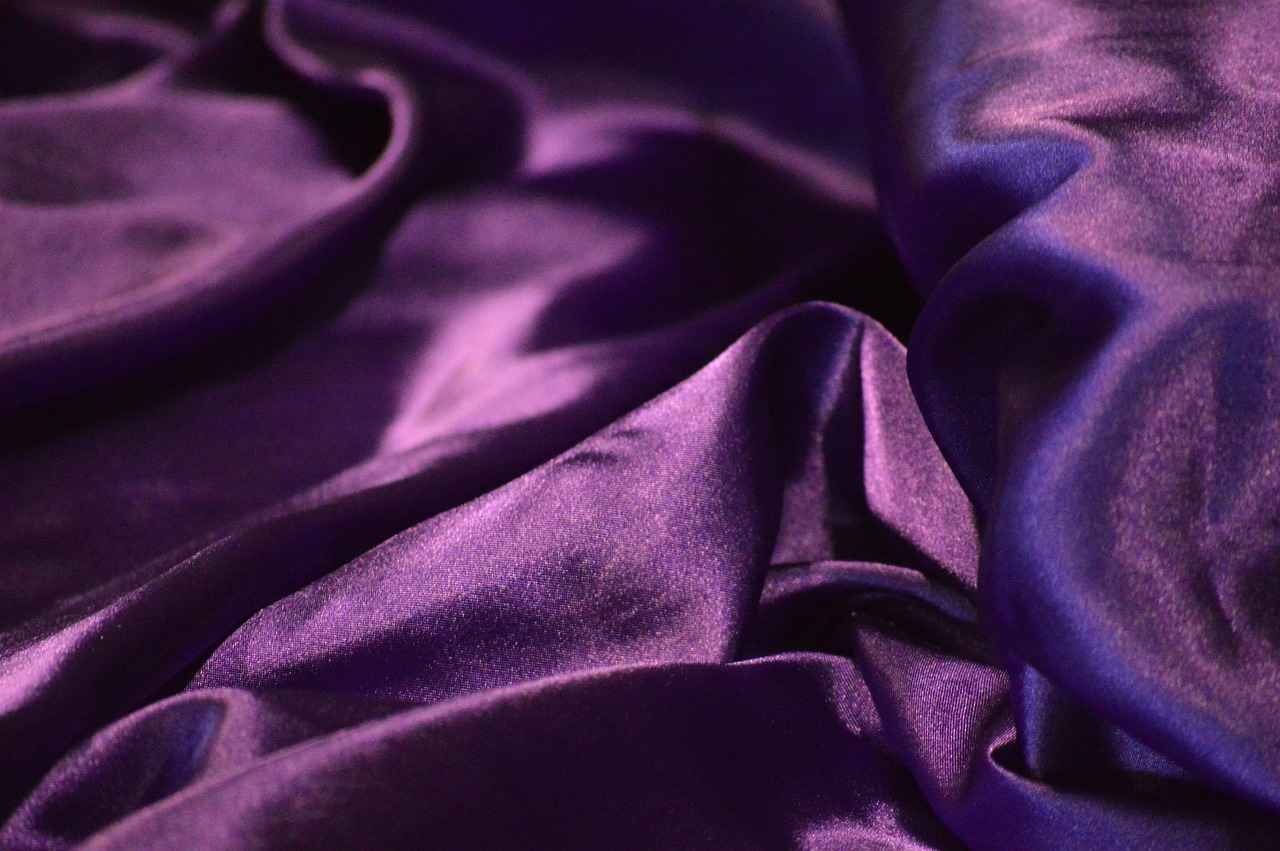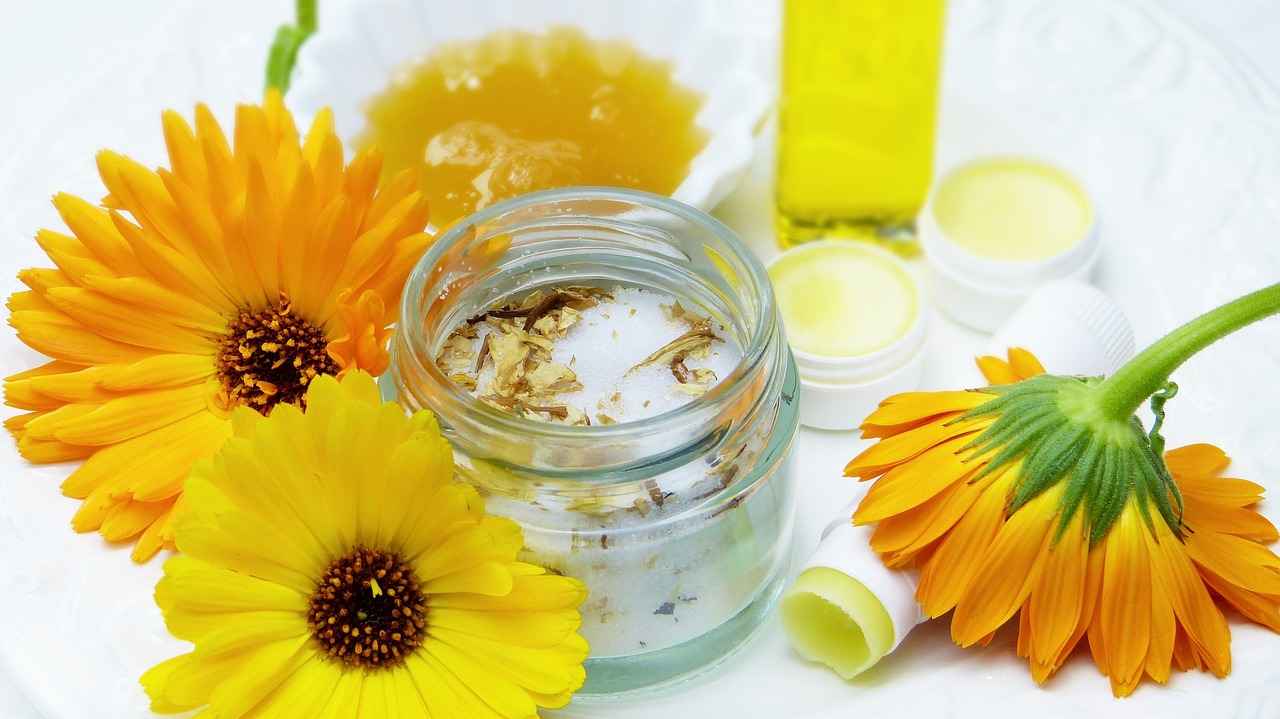This article delves into the most effective methods for removing stains from delicate satin and silk slip dresses, ensuring their longevity and pristine appearance. With practical tips and techniques for stain removal, you’ll be equipped to handle any mishap that comes your way.
Why Are Stains on Satin and Silk Dresses Challenging?
Understanding the unique properties of satin and silk fabrics is crucial in addressing stains effectively. These luxurious materials are known for their delicate nature and susceptibility to damage. Unlike more durable fabrics, satin and silk can easily be marred by improper cleaning methods, making stain removal a meticulous process.
What Types of Stains Can Affect Satin and Silk?
Common stains such as oil, wine, ink, and food can significantly impact the appearance of satin and silk garments. Recognizing these stains is essential for effective treatment. Each type of stain requires specific approaches to ensure successful removal without harming the fabric.
How to Treat Oil-Based Stains on Satin?
- Using Cornstarch for Oil Stains: Cornstarch is a gentle yet effective method for absorbing excess oil. Simply sprinkle cornstarch on the stain, let it sit for about 30 minutes, and then brush it off gently.
- Applying Dish Soap and Water Mixture: A mixture of dish soap and water can break down oil stains effectively. Use a soft cloth to dab the solution onto the stain, being careful not to rub too hard.
What to Do About Wine Stains on Silk?
Wine stains can quickly ruin a beautiful silk dress. Acting swiftly is key; blot the stain with a clean cloth and apply a mixture of cold water and white vinegar to neutralize the acidity.
How to Remove Ink Stains from Silk and Satin?
Ink stains present a unique challenge due to their chemical composition. To tackle these, use rubbing alcohol carefully. Dab a cotton ball in rubbing alcohol and gently apply it to the stain, ensuring you test on an inconspicuous area first.
Testing Stain Removal Methods
Always test any stain removal method on an inconspicuous area first. This precaution ensures that the fabric’s color and texture remain intact, preventing further damage.
What Are the Best Practices for General Stain Prevention?
- Choosing the Right Environment: Wearing satin and silk dresses in controlled environments minimizes the risk of stains. Avoiding high-risk situations, such as dining with rich sauces, is key to maintaining these fabrics.
- Regular Cleaning and Maintenance Tips: Regular maintenance, including gentle cleaning, can prolong the life of satin and silk dresses. Following care instructions is crucial for maintaining these delicate fabrics.
When Should You Seek Professional Help?
Sometimes, stains may be too challenging to handle alone. Knowing when to consult a professional cleaner can save your favorite silk or satin dress from irreversible damage. If a stain persists after several attempts at home treatment, it’s wise to seek expert assistance.
By understanding the properties of satin and silk and employing these effective stain removal techniques, you can keep your slip dresses looking their best for years to come.

Why Are Stains on Satin and Silk Dresses Challenging?
When it comes to maintaining the beauty of satin and silk dresses, understanding the unique properties of these luxurious fabrics is essential. Both materials are renowned for their delicate nature and elegant appearance, but they also present significant challenges when it comes to stain removal. This article delves into why stains on satin and silk dresses can be particularly difficult to treat and offers insights into effective care strategies.
Satin and silk are both made from natural fibers, which gives them their soft texture and beautiful sheen. However, this also means they are more susceptible to stains than other fabrics. Here are some key reasons why:
- Fiber Composition: The fibers in satin and silk are smoother and finer, making them more prone to absorbing liquids. This can lead to stains that are harder to remove.
- Color Retention: The dyes used in silk and satin can be sensitive to cleaning agents, meaning that while trying to lift a stain, you might inadvertently damage the color.
- Heat Sensitivity: Both fabrics are sensitive to heat, which can set stains if not treated promptly. High temperatures can also cause shrinkage or distortion of the fabric.
- Texture Damage: The delicate weave of satin and silk can be easily damaged by aggressive cleaning methods, leading to permanent marks or changes in texture.
Because of these factors, it’s crucial to approach stain removal with care. Understanding the specific type of stain is the first step in determining the best method for treatment.
Common stains on satin and silk dresses include:
- Oil-Based Stains: Such as those from makeup or food, which can penetrate the fibers deeply.
- Wine Stains: Red wine can leave a lasting mark if not addressed quickly.
- Ink Stains: Often from pens or markers, these can be particularly tricky due to their chemical composition.
Each type of stain requires a specific approach to ensure effective removal without damaging the fabric.
Here are some effective methods for treating various stains:
- For Oil-Based Stains: Use cornstarch to absorb excess oil. Apply it to the stain, let it sit for at least 30 minutes, and then gently brush it off.
- For Wine Stains: Blot the stain gently with a clean cloth and apply a mixture of cold water and dish soap. Rinse carefully.
- For Ink Stains: Dab the stain with rubbing alcohol on a cotton ball, being careful not to spread it further.
Always remember to test any cleaning method on a hidden area first to ensure it does not harm the fabric.
Preventing stains is often easier than removing them. Here are some best practices:
- Choose the Right Environment: Avoid wearing satin and silk in high-risk situations, such as outdoor events where spills are likely.
- Regular Maintenance: Regularly clean your garments according to care instructions to maintain their appearance and prevent stains from setting.
By understanding the properties of satin and silk and implementing these strategies, you can effectively manage and prevent stains, ensuring your dresses remain in pristine condition.

What Types of Stains Can Affect Satin and Silk?
When it comes to caring for your elegant satin and silk slip dresses, understanding the types of stains that can affect these delicate fabrics is crucial. Satin and silk are renowned for their luxurious feel and appearance, but they are also susceptible to various stains that can mar their beauty. In this section, we will explore some common stains and the best practices for treating them effectively.
Identifying common stains is essential for effective treatment. Different stains require specific approaches for successful removal without harming the fabric. Here are some of the most prevalent types of stains:
- Oil Stains: These can arise from cooking oil, makeup, or even body oils. Oil stains can be particularly challenging to remove due to their greasy nature.
- Wine Stains: Red wine spills can quickly ruin the elegance of a silk dress. The tannins and pigments in wine can penetrate the fibers and set if not treated promptly.
- Ink Stains: Ink from pens or markers can leave unsightly marks that are tough to eliminate. The chemical composition of ink can bond with the fabric, making it harder to remove.
- Food Stains: Sauces, fruits, and other food items can leave behind colorful and sticky residues that can be problematic for satin and silk.
- Water Stains: While it may seem counterintuitive, water can leave marks on silk and satin if it is not dried properly or if minerals in the water are deposited.
Each of these stains requires a tailored approach to treatment. For instance, oil stains may benefit from cornstarch or dish soap solutions, while wine stains can often be treated with club soda or white wine to neutralize the pigments. Ink stains might require the careful application of rubbing alcohol, while food stains often demand immediate blotting and specific cleaning agents.
Understanding the nature of these stains is vital for preserving the integrity of your satin and silk garments. Always remember to test any stain removal method on a small, inconspicuous area first to ensure that the fabric’s color and texture remain intact.
By being aware of the types of stains that can affect your satin and silk dresses and how to treat them, you can maintain their beauty and extend their lifespan.
How to Treat Oil-Based Stains on Satin?
Oil-based stains can be particularly stubborn on satin fabrics, making it essential to understand the best techniques for effective treatment. Satin, known for its luxurious sheen and smooth texture, requires special care to maintain its integrity and appearance. In this section, we will explore various methods to treat oil-based stains on satin, ensuring your garments remain in pristine condition.
Oil-based stains penetrate the fibers of satin, making them challenging to eliminate. The chemical composition of oils allows them to bond with the fabric, creating a stain that can set quickly if not treated promptly. Additionally, the delicate nature of satin means that aggressive cleaning methods can lead to damage, such as discoloration or fabric weakening.
When dealing with oil stains, it’s crucial to act swiftly and use gentle yet effective methods. Here are some recommended techniques:
- Using Cornstarch: Cornstarch is a natural absorbent that can help lift oil stains from satin. Simply sprinkle a generous amount of cornstarch onto the stain and let it sit for 15-30 minutes. This allows the cornstarch to absorb the oil. Afterward, gently brush off the cornstarch and check if the stain has lightened.
- Applying Dish Soap and Water Mixture: A mixture of mild dish soap and warm water can effectively break down oil stains. Mix a few drops of dish soap in a bowl of warm water, then use a soft cloth to dab the solution onto the stain. Be careful not to rub, as this can damage the fabric. Rinse the area with a clean, damp cloth to remove any soap residue.
- Using Baby Powder: Similar to cornstarch, baby powder can absorb oil. Apply it to the stain and let it sit for several hours or overnight. Brush it off gently and check the stain’s progress.
Before applying any stain removal technique, it is advisable to test the method on a small, inconspicuous area of the fabric. This precaution helps ensure that the treatment will not cause discoloration or damage. Additionally, always use a gentle touch when treating stains on satin to avoid harming the delicate fibers.
If the oil stain persists despite your best efforts, it may be time to consult a professional cleaner. Stains that are deeply set or have been left untreated for an extended period can become increasingly difficult to remove. Professional cleaners have specialized products and techniques designed specifically for delicate fabrics like satin, ensuring the best possible results without risking damage.
While knowing how to treat oil stains is essential, prevention is always the best strategy. Here are a few tips to help you keep your satin garments looking their best:
- Avoid Eating Greasy Foods: When wearing satin, be cautious of foods that are likely to cause spills or stains.
- Store Carefully: Keep satin garments in dust bags to protect them from accidental oil exposure.
- Use Stain Repellent: Consider applying a fabric protector designed for satin to help repel oil and other stains.
By understanding how to treat and prevent oil-based stains on satin, you can extend the life of your favorite garments and maintain their elegant appearance.
Using Cornstarch for Oil Stains
When it comes to caring for your delicate satin and silk slip dresses, understanding the best methods for stain removal is crucial. One of the most effective and gentle solutions for tackling oil stains is cornstarch. This natural absorbent works wonders in lifting oil from fabrics without causing damage.
Cornstarch is not only a common kitchen staple but also a powerful stain-fighting agent. Its absorbent properties make it ideal for dealing with oil-based stains, which can be particularly stubborn on sensitive fabrics like satin and silk. Unlike harsh chemicals, cornstarch is gentle, ensuring that the delicate fibers of your garment remain intact.
To utilize cornstarch for oil stains, follow these simple steps:
- Act Quickly: The sooner you treat the stain, the better the results. As oil sits, it penetrates deeper into the fabric.
- Apply Cornstarch: Generously sprinkle cornstarch directly onto the stain. Ensure that the area is fully covered.
- Let It Sit: Allow the cornstarch to sit on the stain for at least 15 to 30 minutes. This waiting period enables the cornstarch to absorb the oil effectively.
- Brush Off: After the time has elapsed, gently brush off the cornstarch with a soft cloth or a soft brush. Be careful not to rub the fabric, as this can cause damage.
- Check the Stain: Inspect the area to see if the stain has lifted. If necessary, repeat the process until the stain is gone.
For more stubborn oil stains, you can enhance the effectiveness of cornstarch by combining it with other gentle cleaning solutions. For instance, after using cornstarch, you may apply a mixture of mild dish soap and water to the area. Here’s how:
1. Mix a few drops of dish soap in a cup of warm water.2. Dampen a clean cloth with the solution and gently dab the stained area.3. Rinse with cold water and pat dry.
This combination can help break down any remaining oils while keeping the fabric safe.
While cornstarch is generally safe for satin and silk, it is always wise to conduct a patch test on an inconspicuous area of the fabric before full application. This step ensures that there are no adverse reactions with the dye or texture of the material.
Additionally, avoid using cornstarch on heavily soiled areas or stains that have been set by heat, such as from an iron, as this may lead to permanent discoloration.
Using cornstarch for oil stains on satin and silk dresses is a simple yet effective method that can help maintain the beauty and longevity of your delicate garments. By acting quickly and following the right techniques, you can keep your favorite dresses looking pristine.
Applying Dish Soap and Water Mixture
When it comes to caring for your delicate satin and silk slip dresses, stain removal can be a daunting task. However, using the right techniques can help maintain their beauty and longevity. One effective method involves using a mixture of dish soap and water, which can effectively break down oil stains without damaging the fabric.
Dish soap is designed to cut through grease and grime, making it an excellent choice for treating oil stains. Its gentle yet effective formula is safe for delicate fabrics like satin and silk, provided it is used correctly. The key is to ensure that the mixture is diluted adequately to prevent any potential damage to the fibers.
Creating a stain removal solution is simple:
- Take a small bowl and mix one tablespoon of dish soap with two cups of lukewarm water.
- Stir gently to combine, ensuring the soap is thoroughly dissolved.
This mixture should be light and bubbly, which helps in breaking down the oil stains effectively.
Follow these steps to treat oil stains on your satin and silk dresses:
- Test First: Before applying the mixture to the stained area, test it on an inconspicuous section of the fabric to ensure there is no discoloration.
- Apply the Solution: Using a clean, soft cloth or sponge, gently dab the stained area with the soap mixture. Avoid rubbing, as this can damage the delicate fibers.
- Blot the Stain: After applying the solution, use a dry cloth to blot the area. This will help lift the stain without pushing it deeper into the fabric.
- Rinse: Once the stain is lifted, dampen another clean cloth with plain water and gently wipe the area to remove any soap residue.
- Air Dry: Allow the dress to air dry completely, away from direct sunlight, to prevent any fading.
The dish soap and water mixture is non-toxic and free from harsh chemicals that can harm satin and silk. When applied with care, it effectively targets oil stains while preserving the integrity of the fabric. This method is particularly advantageous because it can be done at home without the need for expensive dry cleaning services.
While the dish soap method is effective, here are a few additional tips:
- Act Quickly: The sooner you treat a stain, the better your chances of complete removal.
- Use Cold Water: Always use cold or lukewarm water, as hot water can set the stain.
- Avoid Heat: Never use heat to dry the fabric after cleaning, as this can cause any remaining stain to set.
By following these guidelines and using the dish soap and water mixture, you can effectively tackle oil stains on your satin and silk dresses, keeping them looking beautiful for years to come.
What to Do About Wine Stains on Silk?
Wine stains can be a nightmare for anyone who loves wearing elegant silk dresses. The luxurious feel and appearance of silk make it a popular choice for special occasions, but its delicate nature means that quick action is essential when accidents happen. Knowing how to treat wine stains effectively can mean the difference between saving your favorite dress and facing permanent damage.
Wine stains are particularly challenging due to the tannins and pigments present in the wine. These components can quickly penetrate the fibers of silk, making it crucial to act swiftly. The delicate structure of silk means that aggressive cleaning methods can lead to further damage, such as fading or tearing.
- Blot, Don’t Rub: The first step is to gently blot the stain with a clean cloth or paper towel. Rubbing can spread the stain and push it deeper into the fibers.
- Cold Water Rinse: If possible, rinse the stained area with cold water to dilute the wine. Always do this from the back of the fabric to prevent the stain from seeping further.
Once you’ve blotted the stain and rinsed it, consider using one of these home remedies:
- White Vinegar and Dish Soap: Mix one part white vinegar with two parts water and add a few drops of dish soap. Apply the solution to the stain with a soft cloth, gently blotting until the stain lifts.
- Baking Soda Paste: Create a paste using baking soda and water. Apply it to the stain and let it sit for about 30 minutes before gently rinsing it off with cold water.
If the stain persists despite your efforts, it may be time to seek professional help. Dry cleaners have specialized techniques and products designed to treat wine stains on delicate fabrics like silk. Always inform them about the stain’s nature and your attempts at removal to ensure the best care.
While accidents happen, there are preventive measures you can take to protect your silk dresses:
- Choose Your Events Wisely: Consider the setting before wearing silk. Outdoor events or parties with potential spills may not be the best choice.
- Use Stain-Repellent Sprays: Investing in a fabric protector can provide an additional layer of defense against spills.
In conclusion, while wine stains on silk can be daunting, knowing how to respond quickly and effectively can help preserve your beautiful garments. By following the tips outlined above, you can enjoy your silk dresses without fear of stains ruining your special moments.

How to Remove Ink Stains from Silk and Satin?
Ink stains can be particularly troublesome, especially on delicate fabrics like silk and satin. Their unique chemical composition makes them difficult to remove without causing potential damage to the fabric. Understanding how to effectively treat these stains is essential for maintaining the beauty and integrity of your garments. Below, we explore various methods for ink stain removal, ensuring your silk and satin dresses remain in pristine condition.
Ink stains are challenging due to their oil-based and dye components. When ink comes in contact with fabric, it can penetrate the fibers, making it harder to lift. Moreover, silk and satin are particularly sensitive to harsh chemicals, which can lead to discoloration or damage. Therefore, employing gentle yet effective removal techniques is crucial.
Several methods can be employed to tackle ink stains on silk and satin. Here are some of the most effective:
- Using Rubbing Alcohol: This is one of the most recommended methods for ink stain removal. Dab a small amount of rubbing alcohol onto a cotton ball or clean cloth and gently blot the stain. Avoid rubbing, as this can spread the ink further.
- Milk Method: Soaking the stained area in milk can help lift the ink. Allow the fabric to soak for about an hour, then rinse with cold water.
- Vinegar and Cornstarch Paste: Create a paste using equal parts vinegar and cornstarch. Apply this to the stain and let it dry. Once dry, brush off the residue and rinse the fabric.
Before applying any stain removal method to your silk or satin dress, it is vital to conduct a test patch. Choose a hidden area of the fabric and apply the chosen method. This step ensures that the color and texture of the fabric remain undamaged. If the test area shows no adverse effects, proceed with treating the ink stain.
When dealing with ink stains, keep the following precautions in mind:
- Always work from the outside in to prevent spreading the stain.
- Use cold water for rinsing, as hot water can set the stain.
- Avoid using bleach or harsh detergents, as these can damage the delicate fibers.
Preventing ink stains is often easier than removing them. Here are some practical tips:
- Be cautious when using pens or markers around your silk and satin garments.
- Store your dresses in a safe place where they are less likely to come into contact with ink.
- Consider using a protective spray designed for delicate fabrics.
By understanding the unique properties of silk and satin and employing the right techniques, you can effectively remove ink stains while preserving the integrity of your favorite dresses. Remember, when in doubt, seeking professional cleaning help is always a wise choice.
Using Rubbing Alcohol for Ink Stains
When it comes to maintaining the beauty of your satin and silk slip dresses, knowing how to treat stains effectively is essential. Among the various types of stains, ink stains can be particularly troublesome, as they can quickly set in and become permanent if not addressed promptly. One commonly used solution for ink stain removal is rubbing alcohol, but it’s crucial to understand how to use it correctly to avoid damaging these delicate fabrics.
Rubbing alcohol is a powerful solvent that can effectively break down ink stains. However, it is important to use it with caution, especially on silk and satin. These materials are known for their delicate nature, and improper application can lead to discoloration or damage.
Before applying rubbing alcohol directly to the stain, it is advisable to perform a patch test. Choose a hidden area of the fabric and apply a small amount of rubbing alcohol to see how the material reacts. If there is no adverse effect, you can proceed with treating the stain.
- Materials Needed:
- Rubbing alcohol (isopropyl alcohol)
- Cotton balls or soft cloth
- Clean water
- Paper towels
To effectively remove the ink stain, follow these steps:
- Blot the Stain: Use a clean paper towel to gently blot the ink stain. Avoid rubbing, as this can spread the ink further into the fabric.
- Apply Rubbing Alcohol: Dampen a cotton ball or soft cloth with rubbing alcohol. Gently dab it onto the stained area, starting from the outside and moving towards the center to prevent the stain from spreading.
- Blot Again: After applying the rubbing alcohol, use a clean paper towel to blot the area again. You should see the ink transferring to the paper towel.
- Rinse: Once the stain has lifted, rinse the area with clean water to remove any residual rubbing alcohol. This step is crucial to prevent any potential damage to the fabric.
- Air Dry: Allow the fabric to air dry completely. Avoid using heat sources, as they can set any remaining stain.
While rubbing alcohol can be effective, it’s important to note that not all stains respond the same way. If the ink stain persists after treatment, consider consulting a professional cleaner who specializes in delicate fabrics.
In summary, using rubbing alcohol can be a viable solution for treating ink stains on satin and silk dresses, provided it is applied with care. Always remember to test on a small area first, and follow up with proper rinsing to maintain the integrity of your beautiful garments.
Testing Stain Removal Methods
When it comes to maintaining the beauty of your satin and silk slip dresses, is an essential step that should never be overlooked. These luxurious fabrics are known for their delicate nature, which makes them particularly vulnerable to damage from various cleaning agents. By taking the time to test any stain removal technique on an inconspicuous area first, you can ensure that the fabric’s color and texture remain intact, preserving its elegance and charm.
Testing stain removal methods is crucial for several reasons:
- Prevention of Damage: Fabrics like satin and silk can react unpredictably to certain cleaning solutions. A patch test helps you avoid discoloration or texture changes.
- Understanding Fabric Behavior: Different fabrics respond differently to various stain removal agents. Testing allows you to gauge how your specific fabric will react.
- Confidence in Results: Knowing that a method is safe for your dress gives you the confidence to proceed with stain removal without fear of causing further damage.
To effectively test a stain removal method, follow these simple steps:
- Select an Inconspicuous Area: Choose a hidden spot on the dress, such as the inside hem or seam, where any potential damage won’t be visible.
- Apply a Small Amount: Use a cotton swab or a clean cloth to apply a small amount of the stain removal solution to the area.
- Observe for Reactions: Wait for a few minutes and check for any discoloration or fabric damage. If no adverse effects are observed, it is likely safe to use on the stain.
While conducting your test, keep an eye out for the following:
- Color Change: Any noticeable fading or darkening of the fabric indicates that the method may not be suitable.
- Texture Alteration: Feel the tested area for any changes in texture, such as stiffness or roughness, which could indicate damage.
- Residue Left Behind: Ensure that the cleaning agent does not leave a sticky or discolored residue after drying.
Skipping the testing phase can lead to disastrous outcomes:
- Permanent Damage: A stain removal method that seems effective can cause irreversible damage to your dress.
- Increased Costs: If your dress is damaged, you may need to invest in professional cleaning or even replacement.
- Loss of Sentimental Value: Many satin and silk dresses hold sentimental value, and damaging them can lead to emotional distress.
In conclusion, always remember that is a fundamental step in the care of satin and silk slip dresses. By taking the time to ensure that your chosen method is safe, you can maintain the beauty and integrity of your favorite garments for years to come. A little precaution goes a long way in preserving the elegance of these delicate fabrics.

What Are the Best Practices for General Stain Prevention?
When it comes to maintaining the beauty of your satin and silk dresses, preventing stains is crucial. These luxurious fabrics are not only stunning but also delicate, making them susceptible to damage from spills and stains. By implementing effective best practices, you can significantly reduce the risk of stains and prolong the life of your favorite garments.
- Choose the Right Environment: It’s essential to wear satin and silk dresses in controlled settings. Avoid crowded places where spills are likely, and consider the activities you engage in while wearing these delicate fabrics. For instance, dining in a busy restaurant or attending events with food and drinks can increase the chances of accidental stains.
- Be Mindful of Accessories: The accessories you choose can impact the integrity of your dress. Opt for non-abrasive jewelry and avoid anything that could snag or tear the fabric. Additionally, be cautious with handbags and belts that may rub against your dress.
- Regular Cleaning: Regular maintenance is key to keeping your satin and silk dresses looking their best. Follow the care instructions on the label, which often recommend gentle hand washing or dry cleaning. Even if a dress appears clean, regular cleaning helps prevent the buildup of oils and dirt that can lead to stains.
- Spot Treatment: If you notice a small stain, treat it immediately to prevent it from setting. Use a gentle fabric cleaner or a mixture of mild soap and water. Always test any cleaning solution on an inconspicuous area first to ensure it won’t damage the fabric.
- Store Properly: Proper storage is vital for preventing stains and damage. Use padded hangers to maintain the shape of your dresses and store them in a cool, dry place away from direct sunlight. Consider using garment bags to protect them from dust and potential stains.
- Avoiding Certain Foods and Drinks: When wearing your satin and silk dresses, try to avoid foods and drinks known for staining. For example, red wine, sauces, and greasy foods can be particularly damaging. If you know you’ll be indulging, consider wearing a less delicate outfit.
- Use Protective Sprays: Consider applying a fabric protector spray designed for silk and satin. These sprays create a barrier against stains and can help repel spills. However, always check the product’s compatibility with your fabric before application.
By following these best practices, you can significantly reduce the likelihood of stains on your satin and silk dresses. Remember that prevention is always easier than removal, and taking proactive measures can help maintain the elegance and beauty of your garments for years to come.
In conclusion, while stains may be inevitable at times, adopting these preventive strategies will help safeguard your delicate fabrics. Enjoy the luxurious feel of satin and silk without the constant worry of stains, allowing you to focus on looking fabulous!
Choosing the Right Environment
When it comes to caring for delicate fabrics like satin and silk, is crucial. These luxurious materials are not only beautiful but also require special attention to maintain their pristine condition. In this section, we will explore how to create a safe environment for wearing satin and silk dresses, helping you minimize the risk of stains and damage.
The environment in which you wear your satin and silk dresses plays a significant role in their longevity. Factors such as humidity, temperature, and activities can all contribute to the risk of stains and damage. Understanding these elements can help you make informed decisions about when and where to wear these exquisite fabrics.
- Outdoor Events: Wearing satin or silk dresses outdoors increases the likelihood of stains from food, drinks, and natural elements like dirt or grass.
- Dining Experiences: Restaurants and parties often involve food and beverages that can easily spill, making it essential to be cautious.
- Active Settings: Engaging in activities such as dancing or sports can lead to accidental tears or stains, which are difficult to treat.
To protect your satin and silk dresses, consider the following tips for creating a controlled environment:
- Indoor Settings: Whenever possible, opt for indoor venues where the risk of stains is minimized. This allows for better control over the environment.
- Dress Code Awareness: Be mindful of the dress code of the event. If it involves casual dining or outdoor activities, consider wearing less delicate fabrics.
- Temperature Control: Extreme temperatures can affect the fabric’s integrity. Ensure that the environment is comfortable and not too humid.
Taking precautions can go a long way in preserving your satin and silk dresses:
- Stain-Resistant Sprays: Consider using fabric protectors specifically designed for delicate materials. These sprays can provide an additional layer of protection against spills.
- Carrying a Stain Removal Kit: Keep a small stain removal kit handy, which includes items like a gentle fabric cleaner and absorbent cloths.
- Mindful Movement: Be conscious of your movements to avoid snagging or tearing the fabric. This is especially important in crowded spaces.
Avoiding high-risk situations is essential for keeping satin and silk fabrics in excellent condition. By planning ahead and being aware of your surroundings, you can significantly reduce the chances of unwanted stains or damage. Remember, prevention is often easier than treatment, especially with these delicate materials.
In summary, creating a controlled environment and being mindful of potential risks are fundamental steps in ensuring the longevity of your satin and silk dresses. By following these practical tips, you can enjoy wearing your favorite garments without the constant worry of stains.
Regular Cleaning and Maintenance Tips
When it comes to maintaining the beauty and longevity of your satin and silk dresses, regular cleaning and maintenance are essential. These fabrics are known for their luxurious appearance but are also quite delicate. Therefore, understanding how to care for them can significantly prolong their lifespan. Below are some effective tips for keeping your satin and silk dresses in pristine condition.
Regular cleaning is vital for preventing dirt and stains from setting into the fabric. Satin and silk are particularly susceptible to damage from environmental factors and spills. By keeping these materials clean, you can avoid the need for intensive stain removal treatments that might risk damaging the fabric.
The frequency of cleaning depends on how often you wear the dress and the conditions in which it is worn. As a general rule, it is advisable to clean satin and silk dresses after every 3-5 wears, especially if they have been exposed to makeup, perfume, or sweat. For special occasions, consider a gentle cleaning after each use.
- Hand Washing: Using cold water and a gentle detergent is often the safest method. Avoid wringing the fabric, as this can cause distortion.
- Dry Cleaning: For heavily soiled dresses or those with intricate embellishments, professional dry cleaning is recommended to avoid any potential damage.
- Spot Cleaning: For minor stains, a soft cloth dampened with cold water can be used to gently dab the affected area.
Different stains require tailored approaches to ensure effective removal without damaging the fabric. Here are some common stains and their treatments:
- Oil Stains: Sprinkle cornstarch on the stain to absorb excess oil, then brush it off after a few hours. Follow up with a gentle soap solution.
- Wine Stains: Blot the area with a clean cloth and cold water immediately. For stubborn stains, a solution of white vinegar and water can be effective.
- Ink Stains: Apply rubbing alcohol on a cotton ball and gently dab the stain, being careful to test on a hidden area first.
Proper storage is just as important as cleaning. Here are some tips:
- Use Breathable Garment Bags: Store your dresses in breathable fabric bags to protect them from dust while allowing air circulation.
- Avoid Plastic Covers: Plastic can trap moisture and lead to mold growth, which can damage delicate fabrics.
- Hang or Fold Carefully: If hanging, use padded hangers to maintain the shape. If folding, place tissue paper between layers to prevent creasing.
Every satin and silk dress comes with specific care instructions that cater to the unique properties of the fabric. Following these instructions not only helps maintain the dress’s appearance but also ensures its longevity. Always refer to the care label before attempting any cleaning methods.
By incorporating these , you can ensure that your satin and silk dresses remain as stunning as the day you bought them. Remember, a little care goes a long way in preserving the elegance of these luxurious fabrics.

When Should You Seek Professional Help?
When it comes to maintaining the beauty of your satin and silk slip dresses, stains can present a significant challenge. These delicate fabrics are not only luxurious but also require special care to avoid irreversible damage. While there are various techniques for stain removal, there are times when the situation may be beyond your expertise. Understanding when to seek professional help can be crucial in preserving your cherished garments.
Professional cleaners possess the knowledge and tools necessary to treat stains effectively without risking damage to your fabrics. They are trained to identify the composition of stains and the appropriate methods for removal. This expertise is particularly important for delicate fabrics like satin and silk, which can be easily harmed by improper treatment.
- Persistent Stains: If a stain remains after attempting home remedies, it may require specialized treatment.
- Unusual Stain Types: Stains from substances like ink or dye often need professional-grade solutions.
- Fabric Damage: If you notice any signs of wear or damage, it’s best to consult a professional before further attempts to clean.
- Emotional Value: If the dress holds sentimental value, it’s worth investing in professional care to ensure its preservation.
Attempting to remove stains on your own can sometimes lead to more harm than good. Using the wrong cleaning products can result in discoloration, fabric weakening, or even permanent damage. For instance, using bleach on silk can ruin the fabric entirely. Additionally, aggressive scrubbing can damage the fibers, leading to a loss of texture and sheen.
Professional cleaners utilize a variety of methods tailored to the specific fabric and type of stain. They often employ techniques such as:
- Dry Cleaning: This method is safe for many delicate fabrics and can effectively remove tough stains.
- Specialized Stain Treatments: Professionals have access to advanced solutions that are not available to the general public.
- Fabric Protection: After cleaning, some professionals offer treatments that can help protect the fabric from future stains.
When choosing a professional cleaner, consider the following:
- Experience: Look for cleaners who specialize in delicate fabrics.
- Reviews and Recommendations: Check online reviews or seek recommendations from friends.
- Certifications: Ensure they have the proper certifications in fabric care.
In conclusion, while it can be tempting to tackle stains on your own, understanding when to seek professional assistance is key to preserving your satin and silk dresses. The right expertise can make all the difference, ensuring your garments remain as stunning as the day you bought them.
Frequently Asked Questions
- What should I do if I spill something on my satin or silk dress?
Act quickly! Blot the stain gently with a clean cloth to absorb as much liquid as possible. Avoid rubbing, as it can spread the stain. Then, follow the specific stain removal method for the type of spill.
- Can I use regular detergent to clean my satin or silk dress?
It’s best to avoid regular detergents as they can be harsh on delicate fabrics. Instead, opt for a gentle detergent specifically designed for silk or hand wash with mild soap.
- How can I prevent stains on my satin and silk dresses?
Preventing stains is often easier than removing them! Wear your dresses in controlled environments, be cautious with food and drinks, and consider using a protective spray designed for delicate fabrics.
- Is it safe to use rubbing alcohol on silk for ink stains?
Yes, but with caution! Always test on a hidden area first to ensure it doesn’t damage the fabric. If it’s safe, dab the stain gently with a cotton ball soaked in rubbing alcohol.
- When should I consider professional cleaning for my dress?
If the stain persists after your attempts or if you’re unsure about the treatment, it’s time to seek professional help. They have the expertise to handle tough stains without damaging your precious fabric.


